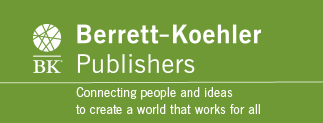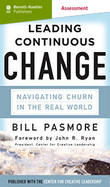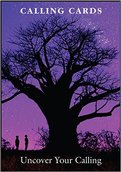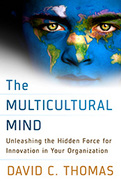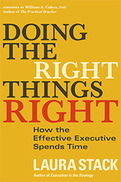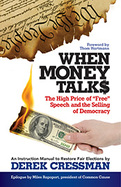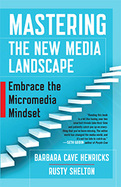Format: Online Subscription (one year, or five tests, whichever comes first)
Description: This 24-question instrument is intended to help you understand your strengths and weaknesses in leading complex change. The online product uses four points of measurement: Discerning, Discovering, Deciding, and Doing. Your score is provided on a radar graph. Numerical scores for each of the four metrics are also provided with interpretation from the author. You may print the results of each test. You can also review previous tests and compare your progress throughout the year. Alternatively, you can take the instrument once, then let four colleagues take the other four tests as part of the 12-month subscription, and then compare each others' scores.
Author's Welcome
Today, changes don’t come at us one at a time or during quiet periods when we have little else to manage. Instead, we are bombarded by multiple changes simultaneously, often stretching the limits of our resources and attention. As we try to respond to these overlapping, never-ending changes, the data suggest that we fail more often than we succeed; in fact, we only feel that we meet our change objectives about 30% of the time. Can we do better? Yes, but we need to take a radically different approach to leading continuous change. This short survey will help you identify your current beliefs and behaviors regarding leading complex change. When you compare your results to what you will learn as you read Leading Continuous Change you will be armed with important knowledge about aspects of your leadership you may wish to strengthen or adjust.
If you are a student of adult development, you may have studied David Kolb’s theory that asserts that adults learn and change when they have an actual experience, reflect on that experience, formulate a theory that explains what happened and how to improve, and finally engage in active experimentation to test their new knowledge. The best way for you to use this assessment is to reflect on your own actual experiences with complex change, take the survey, reflect on the results and then plan actions that you can take to improve. We can all get better at leading complex change; none of us can say that we have mastered it yet.
You’ll find instructions below on how to complete the instrument. Once you do, you’ll get a report that summarizes your results, assesses your strengths and weaknesses and recommends some steps you can take.
You may be the kind of person who feels there is little to be gained from taking this kind of assessment. You may be action-oriented and prefer “learning on the job” and figuring things out for yourself. That’s ok if your world allows you the time and grace to make mistakes. However, we should be wary of the stories that we tell ourselves: that things are going well, that everything is under control, that we’ve got it covered, that everyone loves us and thinks we’re doing a great job, and while we may not be perfect, we’re plenty good enough. The fact is that leading complex change is a tough job and we should accept whatever help we can get. Hopefully, if you take this assessment, you’ll learn important things that can help you be the most effective leader of complex change that you can be.
Since you can have up to four others take this assessment, it would be a good idea to have a few other people in your organization take it and compare results. You will find that some of your peers approach change differently. Discussing those differences and agreeing on how you want to do things going forward should prove a valuable exercise.
Congratulations on taking this next step on improving your success at leading complex, continuous change!
Bill Pasmore
2015

Calling Cards are an interactive tool built to accompany the books The Power of Purpose and Work Reimagined. Using the cards exposes a reader to many different skills, asking him or her to reflect on their own strengths and gifts. The reader then chooses several that reflect their greatest assets. The reader is finally taken through an exercise that uses the results to help identify a new life calling. Additionally, the tool can be played by a friend or family member to offer multiple perspectives to help the reader gain deeper insight into his or her own gifts.
There are 52 cards in the Call Card deck, covering gifts in six major environments: Realistic (data), Structured (tasks), Enterprising (people), Social (feelings), Artistic (ideas), and Investigative (things). Examples of natural gifts on each card are Writing Things, Seeing Possibilities, Fixing Things, Creating Dialogue, Adding Humor, and Getting to the Heart of Matters.
David Thomas makes a compelling business case for recognizing and cultivating a new dimension of diversity—the diversity within individuals! He looks at how to establish the organizational conditions under which multiculturals can flourish and shows how even the most monocultural among us can gain the advantages of a multicultural mind.
Inspired by Peter Drucker's groundbreaking book The Effective Executive, Laura Stack details precisely how 21st-century leaders and managers can obtain profitable, productive results by managing the intersection of two critical values: effectiveness and efficiency.
Effectiveness, Stack says, is identifying and achieving the best objectives for your organization—doing the right things. Efficiency is accomplishing them with the least amount of time, effort, and cost—doing things right. If you're not clear on both, you're wasting your time. As Drucker put it, “There is nothing so useless as doing efficiently that which should not be done at all.” Stack's 3T Leadership offers twelve practices that will enable executives to be effective and efficient, grouped into three areas where leaders spend their time: Strategic Thinking, Teamwork, and Tactics. With her expert advice, you'll get scores of new ideas on how you, your team, and your organization can boost productivity.
2016
There's nothing inherently unconstitutional in limiting the amount of speech, Cressman insists. We do it all the time—for example, cities control when and where demonstrations can take place or how long people can speak at council meetings. Moreover, he argues that while you choose to patronize Fox News, MSNBC, the New York Times, or the Wall Street Journal, political advertising is forced upon you. It's not really free speech at all—it's paid speech. It's not at all what the Founders had in mind when they wrote the First Amendment.
Cressman examines how courts have foiled attempts to limit campaign spending, details what a constitutional amendment limiting paid speech should say, and reveals an overlooked political tool concerned citizens can use to help gain the amendment's passage. Seven times before in our history we have approved constitutional amendments to overturn wrongheaded rulings by the Supreme Court—there's no reason we can't do it again.
The giant brands that once dominated the media landscape—Oprah, the New York Times, NPR, CNN—have seen their monopoly on public attention smashed by the Internet and now find themselves competing with individuals and brands in a sea of micromedia: websites, social media, blogs, podcasts, and more. Ace publicists and marketers Barbara Cave Henricks and Rusty Shelton show that to navigate through this modern terrain, you need to think more like a media executive than a marketer. The key lies in mastering three crucial categories of media—earned, owned, and rented—and knowing how to integrate each for maximum success. By using this proven strategy, you can create a positive feedback loop that will generate massive momentum and grow a large, loyal audience for your message.
